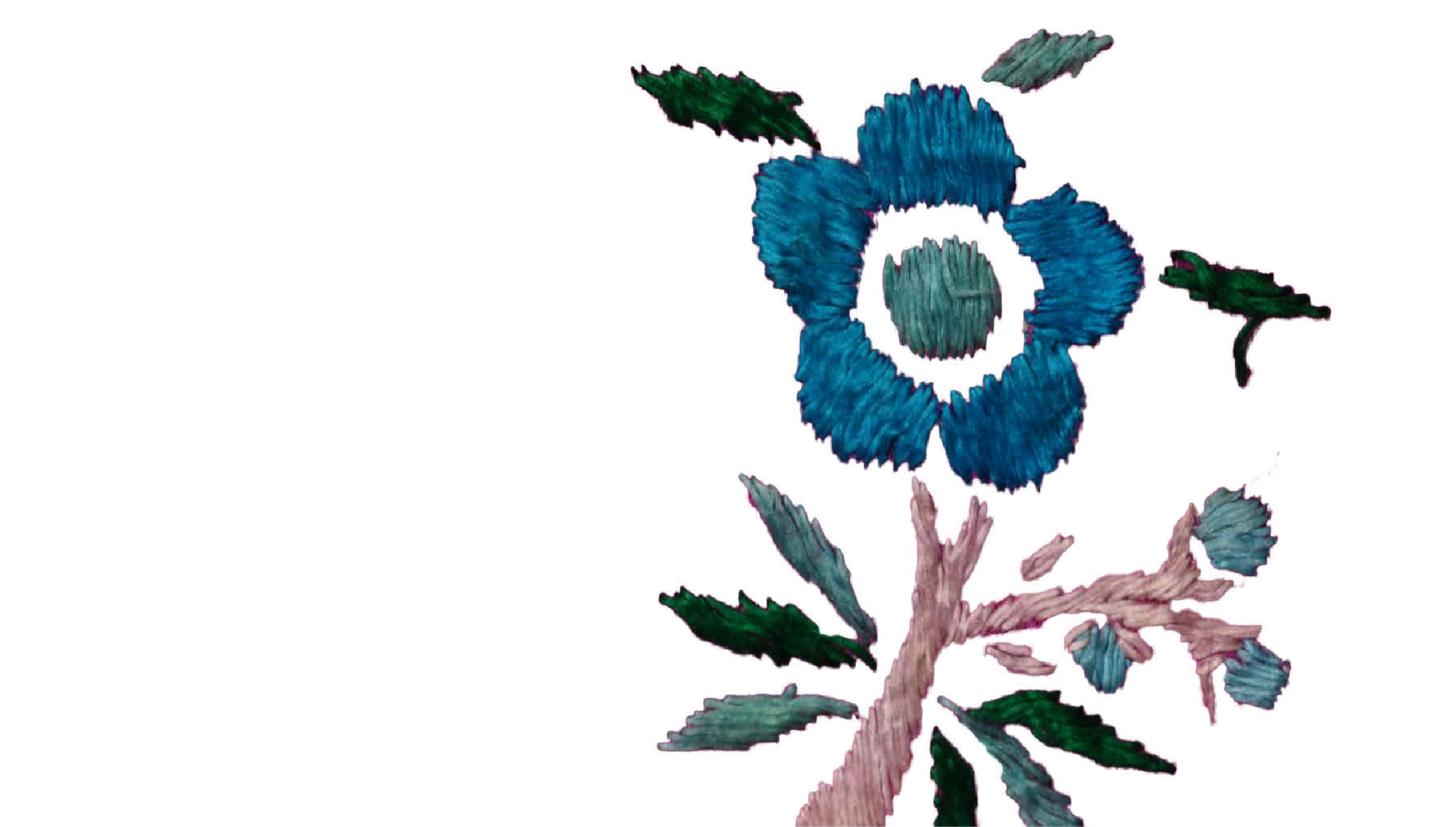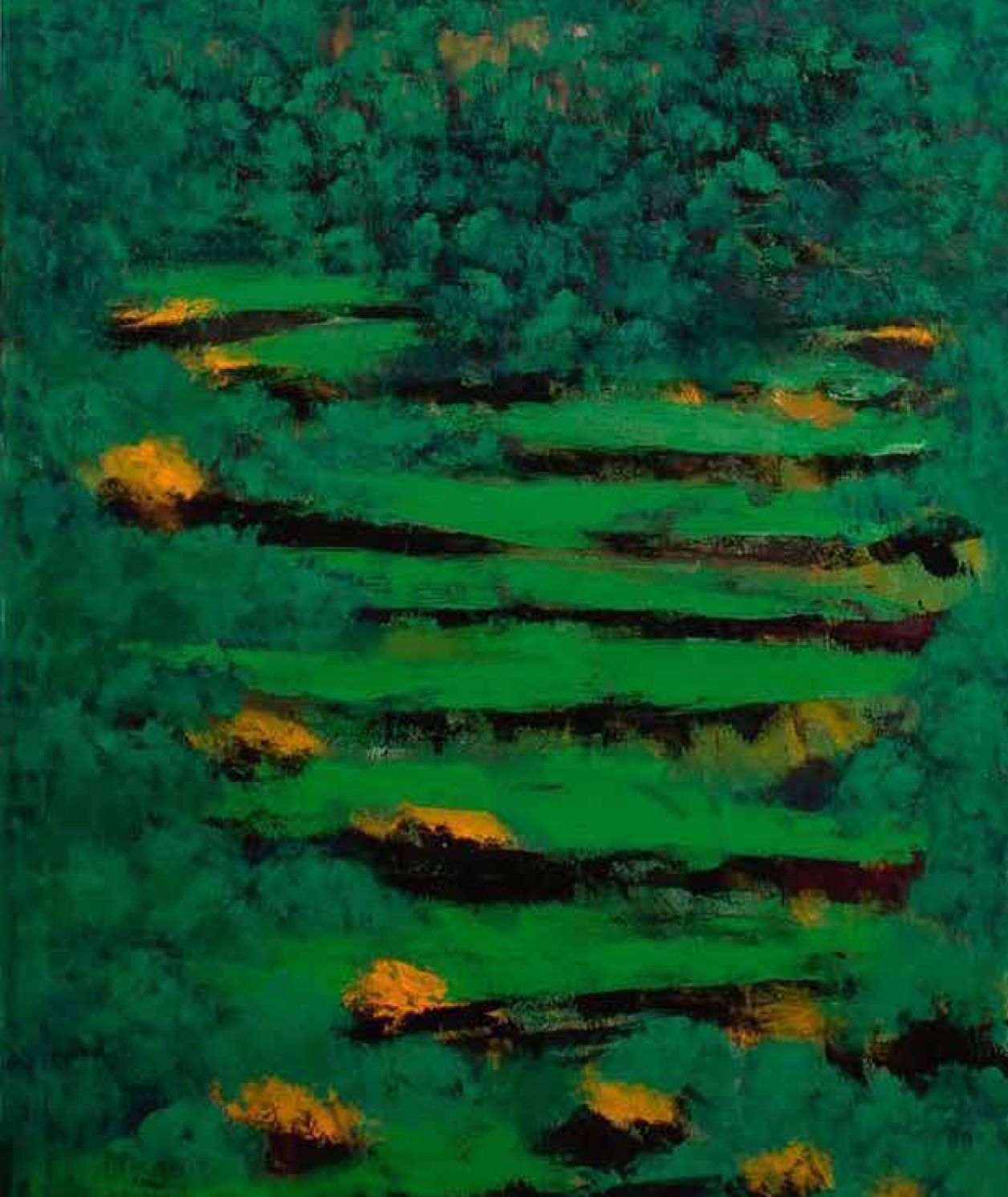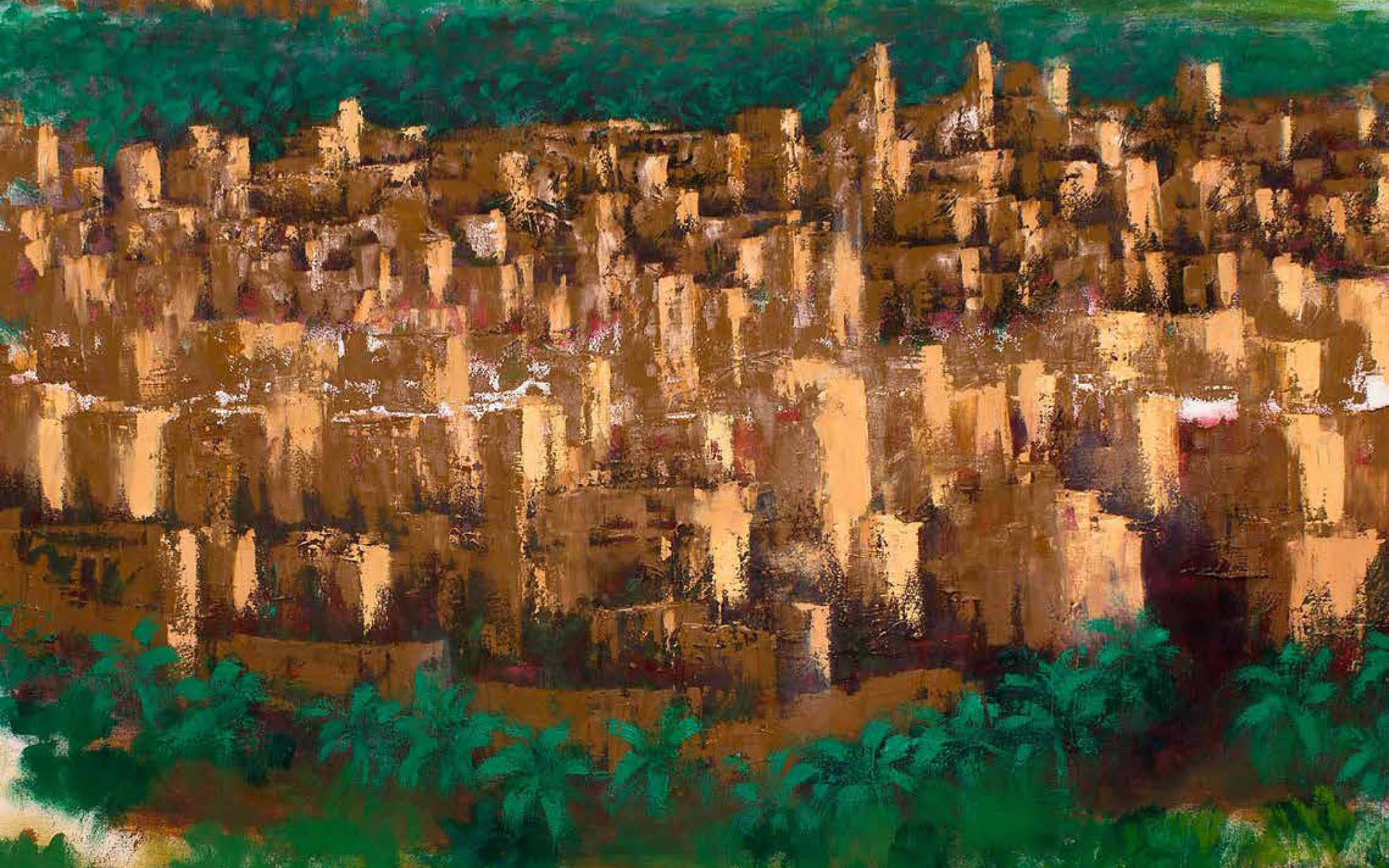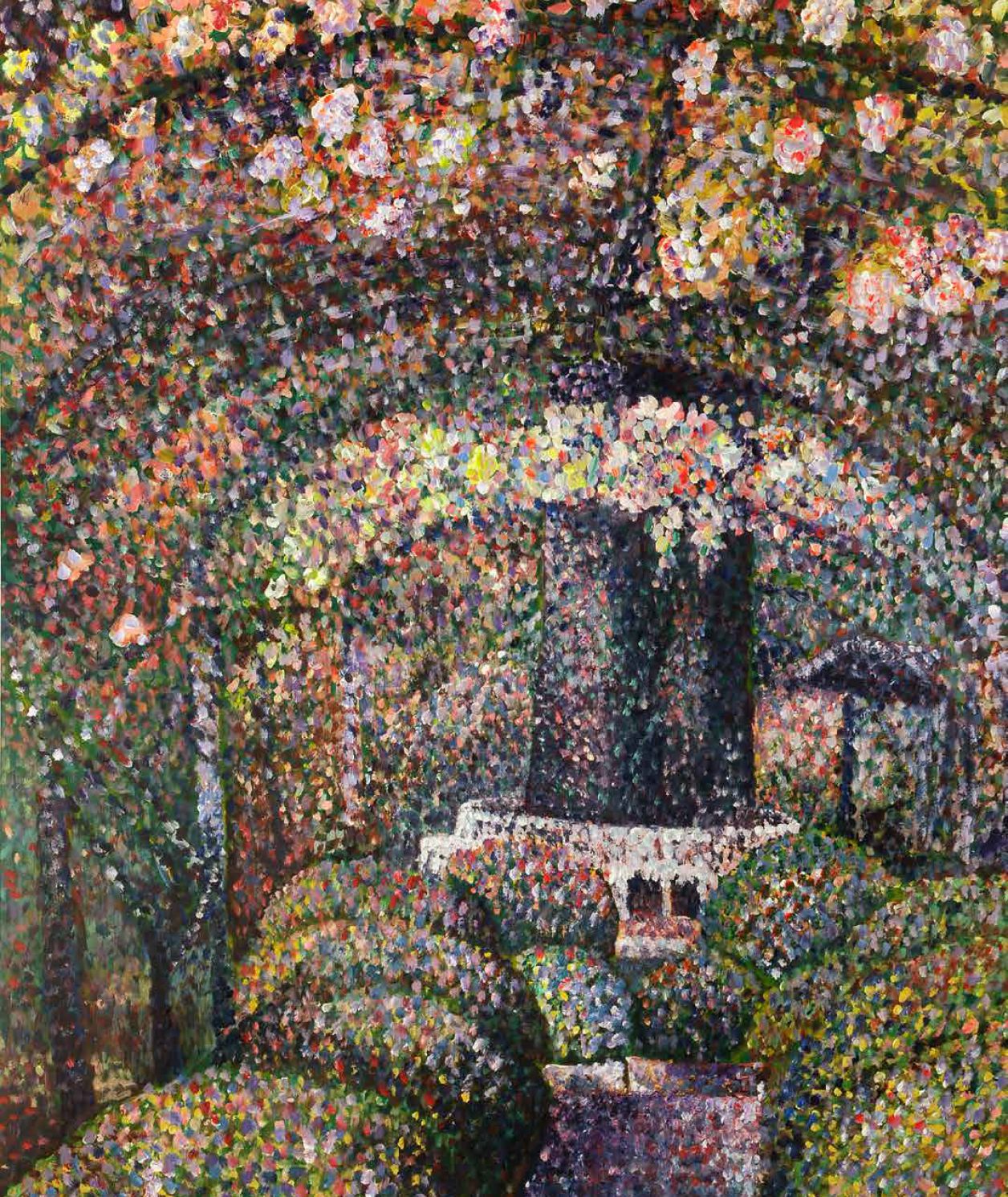Within the vast Saudi Arabian heritage, flowers hold a special significance as decorative motifs in Bedouin costumes. They are represented in everyday clothes, and are reinterpreted on textiles and hand embroidered as a daily craft that decorates as it documents their surroundings inspired by nature.
The non-verbal language of flowers on fabrics speaks to us at multiple levels, where the needle work and raw materials speak of the geo climatic conditions and nature as an expression of the habitats.
The floral motifs tell us of its legends, its myths, and their way of life and the aromatic trade links.
Embroidery created by the Bedouin women of the Najd region for instance, feature inspirations from the desert and its plants. It is an expression of the creativity of the women, who enrich their environment, their own lives and of their families by beautifying everyday objects with love and inspiration from nature.
This fruit is one of the commonly featured motifs, one that grows in some of the Saudi gardens, such as in Taif.
The pomegranate has long been known as an ancient symbol of positive healing, creativity, love, nurture, passion, selfempowerment and fertility. This positive symbol was not only used as a motif in dresses, but also used as a dye for textiles by Saudi women. From a philosophical perspective, by honoring the pomegranate in their creation, they are paying homage to the wisdom learned from this fragile yet strong fruit.
It teaches us to protect, respect, and honor our vulnerability; to discover our inner wisdom, to embrace beauty and power in the seemingly darkest moments of our lives, and to make use of these gifts externally by setting healthy boundaries, learning to express our emotions and creativity in safe ways, and feeling free in who we are.
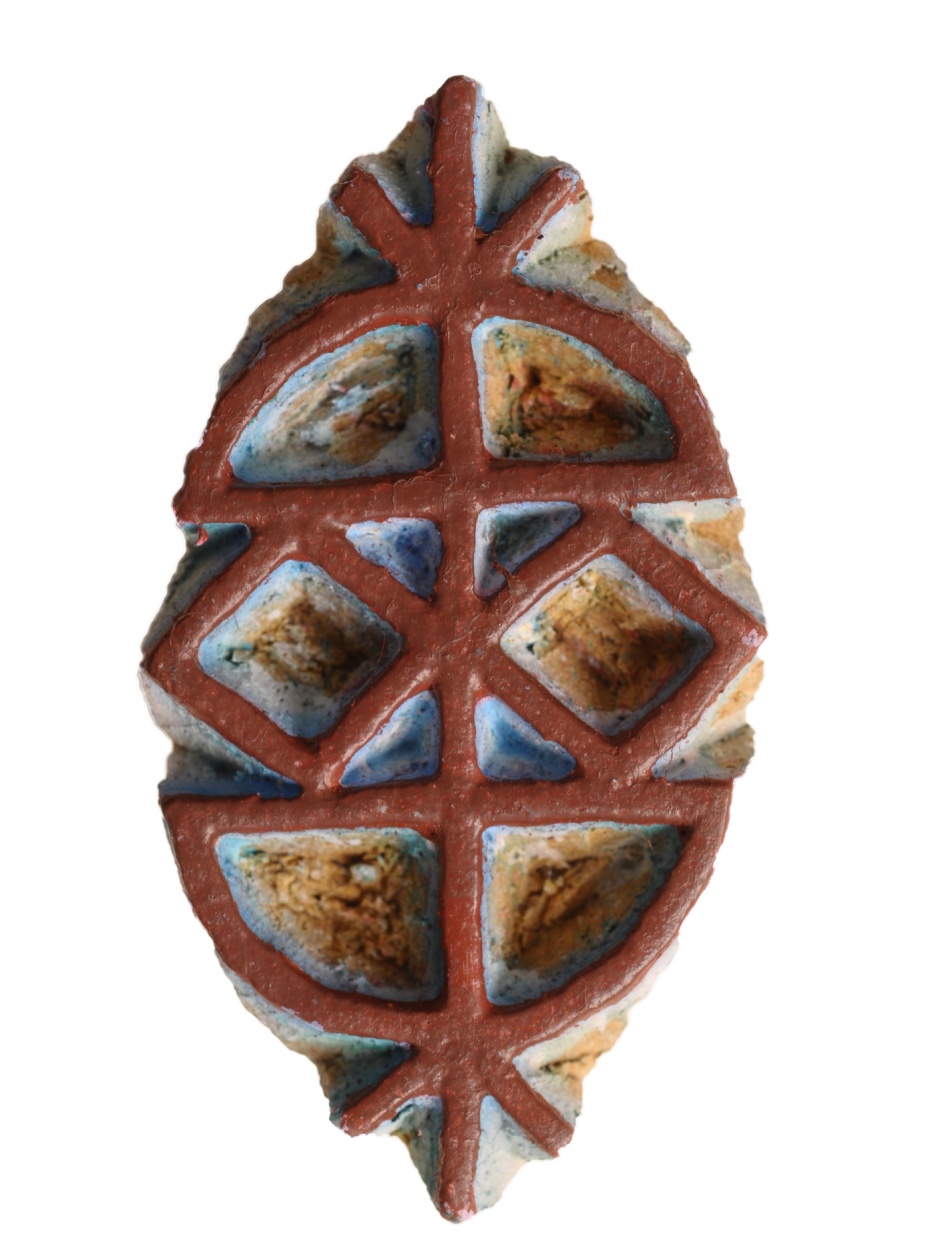
The inhabitants of central Arabia were inspired by their surroundings and the beauty of palm trees around them. Palms are native to desert life and its fruit has been cultivated since the ancient times across the peninsula.
People were and remain in awe of the trees’ branches, firm in their beauty and majesty. They are the most common of motifs, and are national symbols. The floral motifs in textiles capture the diversity of flowers in the Kingdom, flowers such as the Taif rose, the jasmine of Jazan, the lavenders of the north, and many more that decorate our hair, our heads and clothes, and leave a scent on our skins. Given all this—it is easy to see how the Saudi culture is in itself a big colorful garden.
Written by Special Contributor Somaya Badr, CEO of Art of Heritage and Art of Heritage Cultural Trust.

Najdi Palm Tree Motifs. Darrah (19th century inner dress from Riyadh). Courtesy The Art of Heritage center.
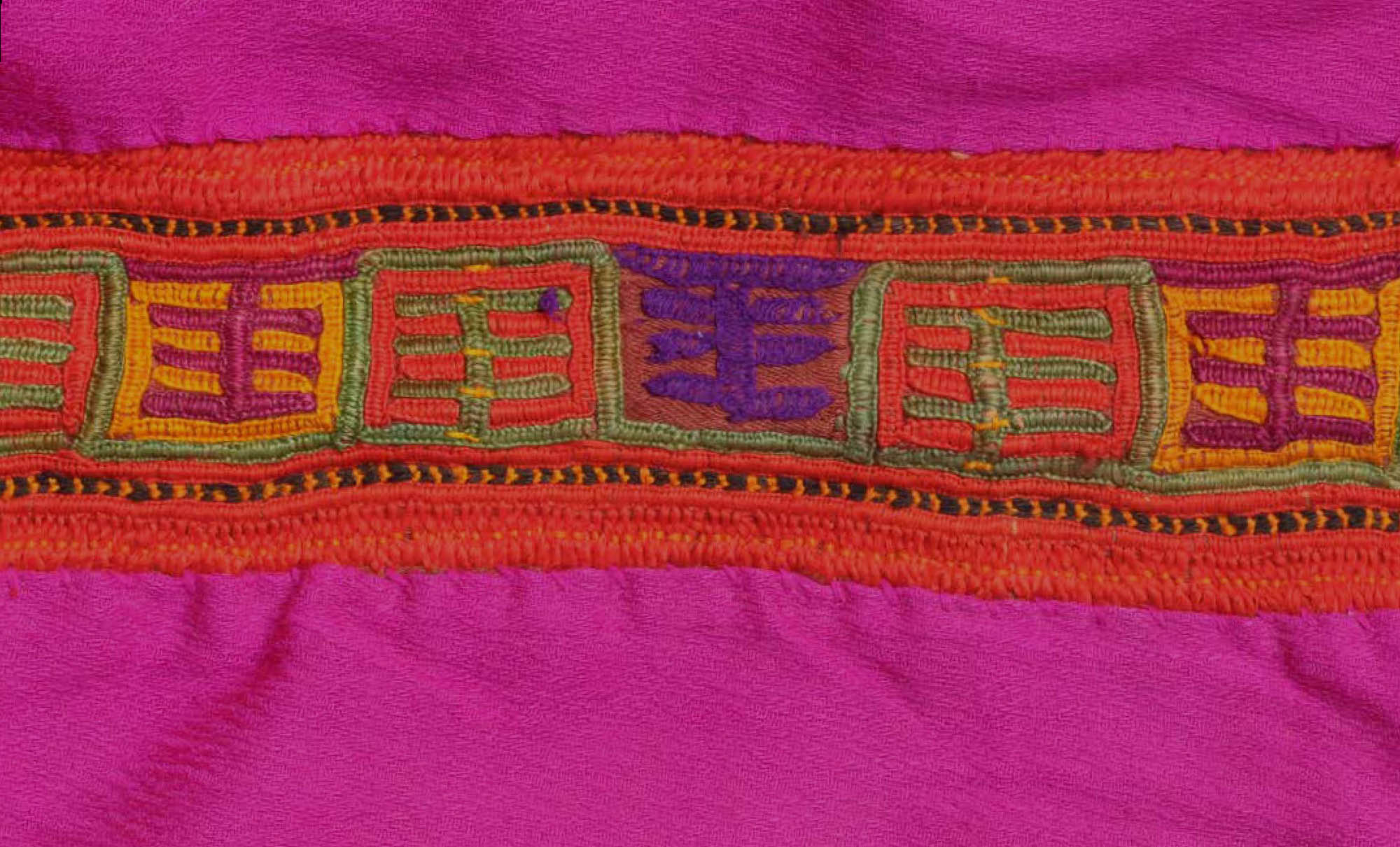
Traditional Saudi Floral Motif. Courtesy of Art of Heritage.
